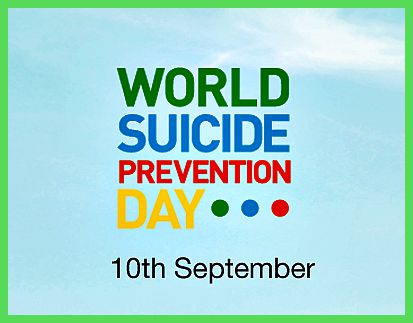An Interview with E.D. Hirsch: The Vocabulary Size of Students is the Best Single Index to their Life Chances and to School Quality
 Michael F. Shaughnessy –
Michael F. Shaughnessy –
1) Professor Hirsch, you just published an article in City Journal about Vocabulary. What brought this about?
The subject is interesting in itself, but I also saw it as a way of drawing attention to the reasons that current school reforms and practices haven’t been working. I’ve been talking about that theme for a long time – the schools aren’t working well because their guiding ideas are too anti-informational: too guided by terms like “mere facts,” “21st-century skills,” “rote learning,” “you can always look it up,” “deep understanding, not factoids,” and other versions of the anti-fact how-to-ism of the schools. I saw the theme of vocabulary as a way of proving that those ideas are at best half-truths. I showed that vocabulary size is determined by one’s breadth of information, one’s general knowledge. I described research showing that vocabulary size of 12th graders is the single best predictor of college readiness, job competence, and income level – hence a critical tool for upward mobility and slowing the decline of the middle class.
2) Many people refer to vocabulary as “word knowledge”. How do you conceptualize it?
This is a critically important point. The term “word knowledge” can be highly misleading because it suggests that vocabulary size is something that can be achieved by studying words. I stressed the long-known fact that word study cannot make much of a dent because there are too many words to be learned by a college-ready 12th grader – between 25 and 60 thousand, depending on the counting method. Some brief word study in context, in the course of learning about a subject can be useful when used strategically, but only 5 or ten minutes a day. The fastest and best way to learn words is unconsciously and in context while learning about things. The origin of word knowledge is thing knowledge.
3) Words include nouns, verbs, adjectives, adverbs, preposition and the like. Do these things have to be directly taught, or can they be learned from hearing others?
As I‘ve indicated, the fastest and best route to increasing a student’s vocabulary is by studying things, not words. Of course, words are things too, and knowledge about them, their origins, and character is an intensely important and interesting subject. One part of speech that you mention deserves special attention: nouns. Nouns are names, names of people, of ideas, of things. You can’t really know a noun without knowing the thing it names. That example alone illustrates why the best word study is thing study.
4) Would reading good quality non-fiction as well as fiction books ameliorate one’s vocabulary?
There’s a lot of discussion about “informational text” in the debates over the Common Core State Standards. The term is most unfortunate. Any good work of fiction is informational. There’s a lot of non-fiction in classic literature. How much of Moby Dick is straight non-fictional exposition of whaling? How much of Walden is non-fiction? By the same token, how much of McCollough’s The Great Bridge is gripping narrative equal to any novel? The real decision point is your phrase “good quality” – which should include texts that have more challenging vocabulary than school books do now. And behind all such genre terms – “fiction, non-fiction” is the overarching term “knowledge.” That’s the key — not mere genre, which determines very little in itself.
5) How would a good vocabulary enhance one’s writing, research, and thinking skills?
It’s perhaps too obvious to argue for the importance of words in reading and writing, but their importance for thinking skills is less obvious and is quite interesting. The standard IQ tests have vocabulary sections – for two good reasons. First, raw talent is indicated by one’s ability to infer word meanings from a few clues. Less talented people need more clues, and therefore learn fewer words from the same verbal experiences. BUT the second reason for having a vocabulary section on an IQ test is more egalitarian and interesting. Knowing more words makes you smarter. It enables you to cope with problems more effectively. I have a section on that in my article concerning words and short-term memory. It’s too extensive to rehearse here. Go to the article. It’s an important point for educational reform because it touches on the theme of “critical thinking skill” which everybody agrees is a good thing. You’ll gain more of it if you gain more words.
6) Often a rich, robust, sensitive language reflects a good deal of general information, or core knowledge- but how can the school promulgate this?
My reading of the research literature emphasizes the importance of staying on a topic for at least two weeks in the elementary grades. Topic familiarity speeds up the learning of new words by a large factor. Landauer estimates that one learns words four times faster in a familiar context. Then I think it’s important to plan out the sequence of topics in a coherent way from grade to grade, so that each grade builds on the prior ones, with many important areas of knowledge covered by the time a student reaches the later grades. That’s the route to verbal competence that is taken by Canada, South Korea, and Finland – the countries that manage best to narrow the achievement gap between low and high income students.
7) In most intelligence tests or cognitive tests, vocabulary is a major part of the I.Q. test. Is vocabulary a skill, in your mind, or an innate part of intelligence?
I touched on that in question number 5.
8) How do word knowledge, and “world knowledge” if you will, intersect?
Please see number 3 above.
9) Back in 2006, you published a book entitled “The Knowledge Deficit”….In your estimation, is there “A Vocabulary Deficit”?
Yes! The two things are essentially the same!
10) Obviously, video games, texting, and listening to rap music does not enhance, or promote a wide diverse vocabulary. What do the schools and parents need to do to ensure that their students and children have the ability to express themselves well in written expression as well as in verbal discourse?
Stay on topics for a while, and read more challenging texts. Stanovich and his colleagues showed that written materials use a far more extensive vocabulary than even the most articulate oral speech. So Emerson was right: It’s book-learning that gives a person “a bellyful of words.”
11) What have I neglected to ask?
Nothing essential.


















